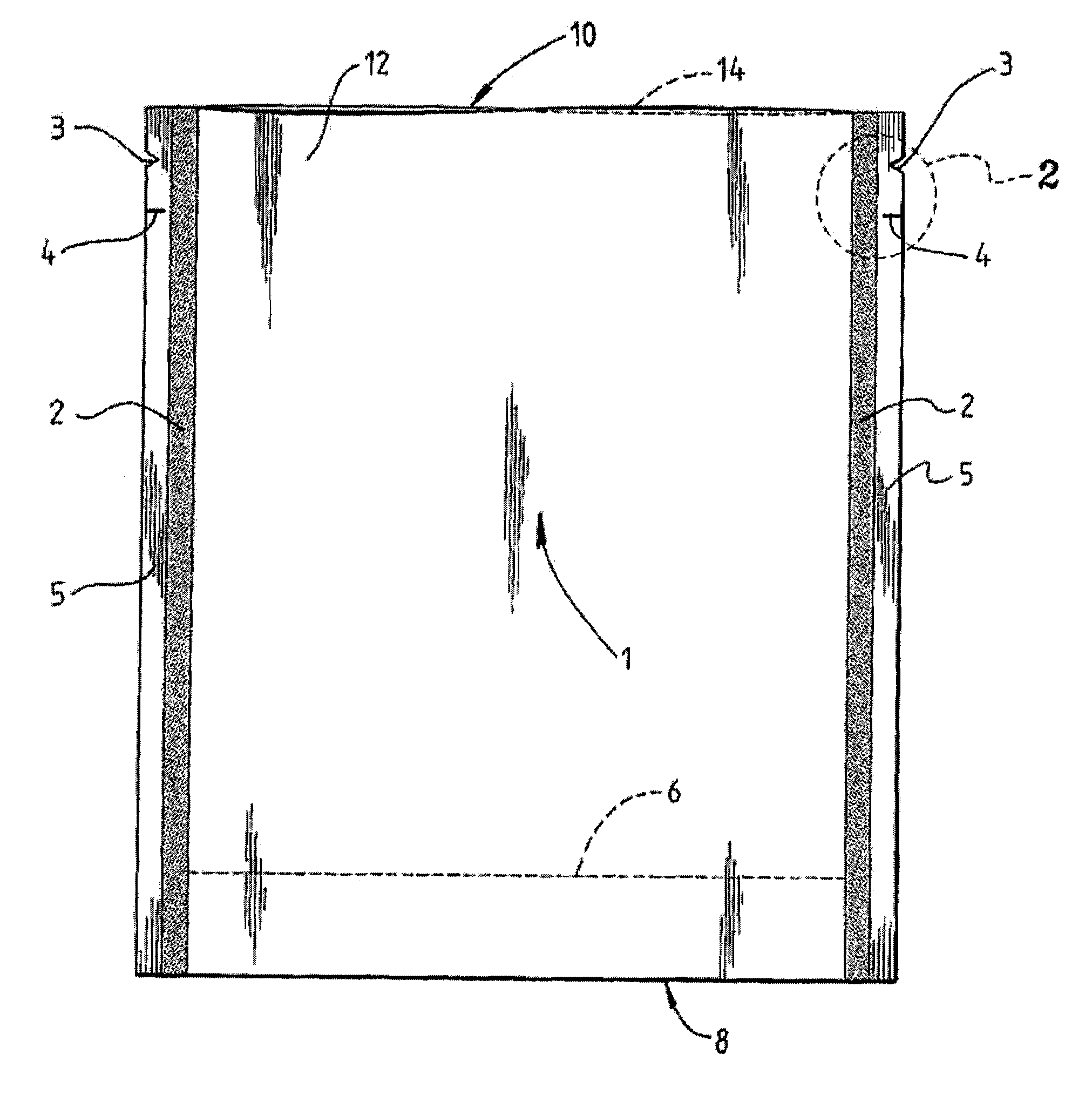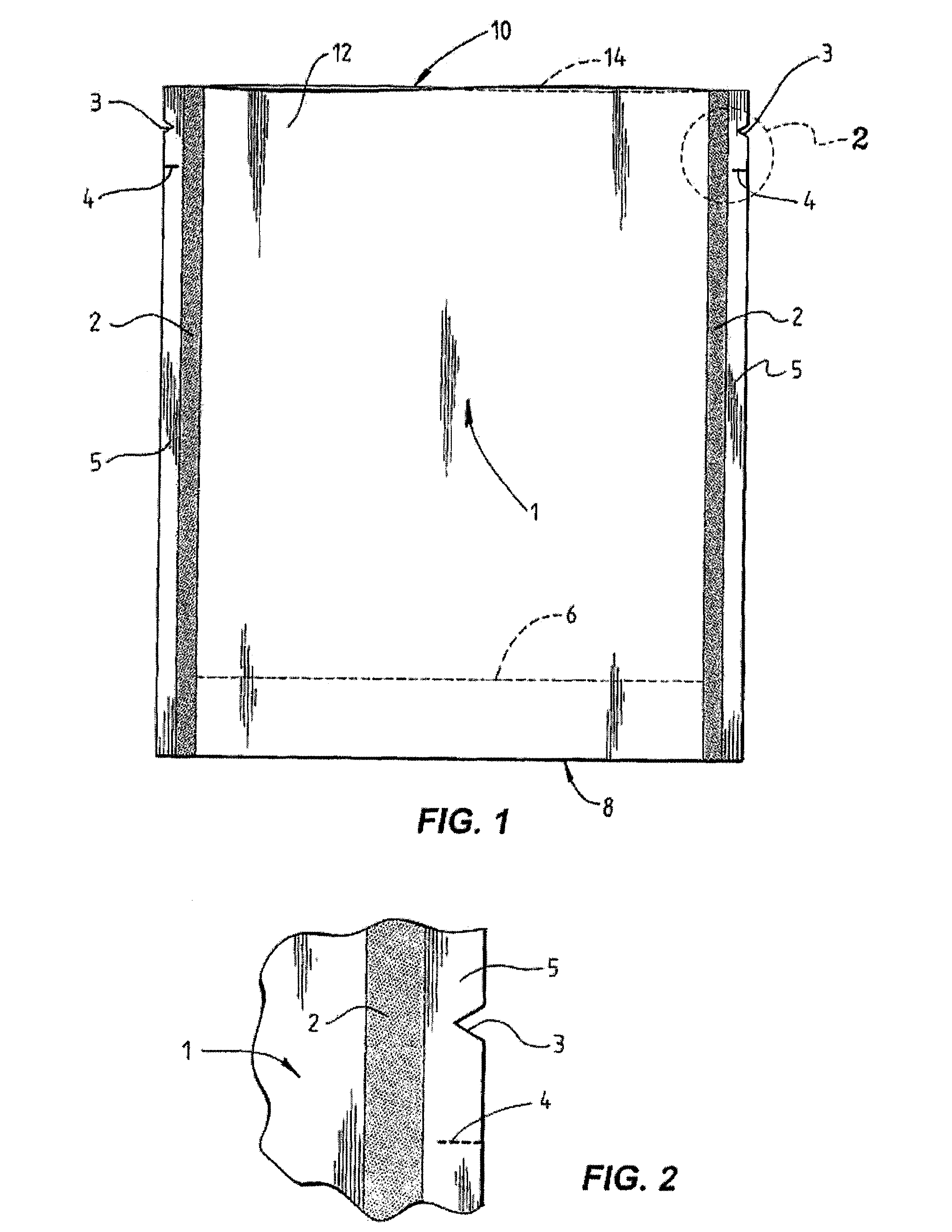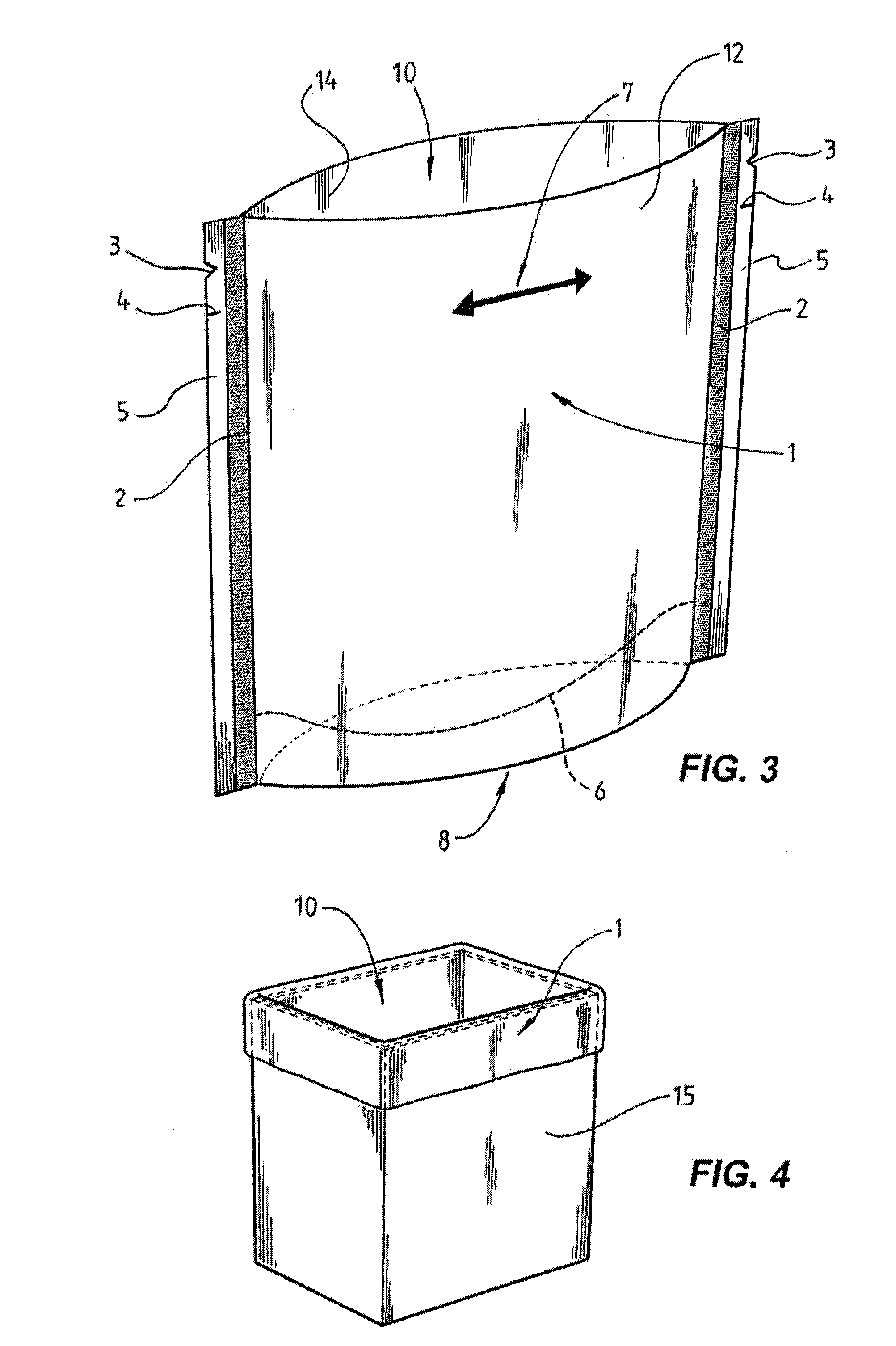Polymer bag
- Summary
- Abstract
- Description
- Claims
- Application Information
AI Technical Summary
Benefits of technology
Problems solved by technology
Method used
Image
Examples
Embodiment Construction
[0064]The bag 1 shown in the Figures is made from a polymer film and comprises (a) a front wall 12, (b) a back wall (not shown), (c) a closed bottom 8, (d) an opening 10, and (e) opposite sides that are defined by heat seals 2 and side skirts 5 that extend outwardly from the heat seals 2.
[0065]The bag 1 also includes a gusset 6 in the bottom 8 of the bag to help the bag expand its volume.
[0066]The bag 1 also includes a tear initiation notch 3 in the skirt 5 on each side of the bag 1.
[0067]The bag 1 also includes a plurality of micro-perforations (not shown) in the polymer film to achieve MAP functionality.
[0068]The bag 1 is manufactured as described in TearFlex International patent application PCT / AU2007 / 000049.
[0069]In one embodiment of the present invention, the bag 1 is pierced to form the plurality of micro-perforations using a laser piercing step that vaporises material from the bag to form the micro-perforations, with the vapour being extracted away from the bag and thereby re...
PUM
| Property | Measurement | Unit |
|---|---|---|
| Tear strength | aaaaa | aaaaa |
Abstract
Description
Claims
Application Information
 Login to View More
Login to View More - R&D Engineer
- R&D Manager
- IP Professional
- Industry Leading Data Capabilities
- Powerful AI technology
- Patent DNA Extraction
Browse by: Latest US Patents, China's latest patents, Technical Efficacy Thesaurus, Application Domain, Technology Topic, Popular Technical Reports.
© 2024 PatSnap. All rights reserved.Legal|Privacy policy|Modern Slavery Act Transparency Statement|Sitemap|About US| Contact US: help@patsnap.com










